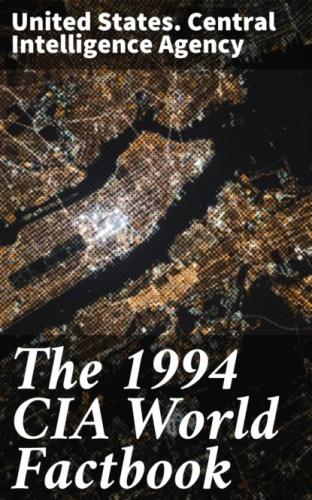(202) 895–6750
consulate(s) general:
Chicago, Los Angeles, and New York
US diplomatic representation:
chief of mission:
Ambassador Swanee G. HUNT
chancery:
Boltzmanngasse 16, A-1091, Vienna
mailing address:
Unit 27937, Vienna
telephone:
[43] (1) 313–39
FAX:
[43] (1) 513–43-51
consulate(s) general:
Salzburg
Flag:
three equal horizontal bands of red (top), white, and red
@Austria, Economy
Overview: Austria boasts a prosperous and stable socialist market economy with a sizable but falling proportion of nationalized industry and extensive welfare benefits. Thanks to its raw material endowment, a technically skilled labor force, and strong links to German industrial firms, Austria occupies specialized niches in European industry and services (tourism, banking) and produces almost enough food to feed itself with only 8% of the labor force in agriculture. Increased export sales resulting from German unification, boosted Austria's economy through 1991, but Austria's GDP growth slowed to 2% in 1992 and −0.5% in 1993 due to the weak international economy, particularly in Germany - its largest trading partner. GDP growth will resume slowly in 1994, with estimates ranging from a 0.5% to a 1% increase. Unemployment has risen to 7% as a result of the slowdown and will continue to rise in 1994. Problems for the l990s include an aging population, the high level of subsidies, and the struggle to keep welfare benefits within budgetary capabilities. Austria's government has taken measures to make the economy more liberal and open by introducing a major tax reform, privatizing state-owned firms, and liberalizing cross-border capital movements. Although it will face increased competition, Austria should benefit from the continued opening of eastern European markets, as well as the 1 January 1994 start of the European Economic Area which extends the European Union rules on the free movement of people, capital, and goods and services to four members (including Austria) of the European Free Trade Association (EFTA). Austria has concluded membership negotiations with the European Union and is expected to join in early 1995, thus broadening European economic unity. The government, however, plans to hold a national referendum on the matter on 12 June 1994; support for and opposition to membership appears about equal. National product: GDP - purchasing power equivalent - $134.4 billion (1993) National product real growth rate: −0.5% (1993) National product per capita: $17,000 (1993) Inflation rate (consumer prices): 3.7% (1993 est.) Unemployment rate: 7% (1993 est.) Budget: revenues: $52.2 billion expenditures: $60.3 billion, including capital expenditures of $NA (1993 est.) Exports: $39.9 billion (f.o.b., 1993) commodities: machinery and equipment, iron and steel, lumber, textiles, paper products, chemicals partners: EC 63.5% (Germany 38.9%), EFTA 9.0%, Eastern Europe/FSU 12.3%, Japan 1.5%, US 3.35% (1993) Imports: $48.5 billion (f.o.b., 1993) commodities: petroleum, foodstuffs, machinery and equipment, vehicles, chemicals, textiles and clothing, pharmaceuticals partners: EC 66.8% (Germany 41.3%), EFTA 6.7%, Eastern Europe/FSU 7.5%, Japan 4.4%, US 4.4% (1993) External debt: $16.2 billion (1993 est.) Industrial production: growth rate −4.5% (1993 est.) Electricity: capacity: 17,600,000 kW production: 49.5 billion kWh consumption per capita: 6,300 kWh (1992) Industries: foods, iron and steel, machines, textiles, chemicals, electrical, paper and pulp, tourism, mining, motor vehicles Agriculture: accounts for 3.2% of GDP (including forestry); principal crops and animals - grains, fruit, potatoes, sugar beets, sawn wood, cattle, pigs, poultry; 80%-90% self-sufficient in food Illicit drugs: transshipment point for Southwest Asian heroin transiting the Balkan route and Eastern Europe Economic aid: donor: ODA and OOF commitments (1970–89), $2.4 billion Currency: 1 Austrian schilling (S) = 100 groschen Exchange rates: Austrian schillings (S) per US$1 - 12.255 (January 1994), 11.632 (1993), 10.989 (1992), 11.676 (1991), 11.370 (1990), 13.231 (1989) Fiscal year: calendar year
@Austria, Communications
Railroads:
5,749 km total; 5,652 km government owned and 97 km privately owned
(0.760-, 1.435- and 1.000-meter gauge); 5,394 km 1.435-meter standard
gauge of which 3,154 km is electrified and 1,520 km is double tracked;
339 km 0.760-meter narrow gauge of which 84 km is electrified
Highways:
total:
95,412 km
paved:
21,812 km (including 1,012 km of autobahn)
unpaved:
mostly gravel and earth 73,600 km
Inland waterways:
446 km
Pipelines:
crude oil 554 km; petroleum products 171 km; natural gas 2,611 km
Ports:
Vienna, Linz (Danube river ports)
Merchant marine:
29 ships (1,000 GRT or over) totaling 158,724 GRT/259,594 DWT, bulk 3,
cargo 23, oil tanker 1, refrigerated cargo 2
Airports:
total:
55
usable:
55
with permanent-surface runways:
20
with runways over 3,659 m:
0
with runways 2,440–3,659 m:
6
with runways 1,220–2,439 m:
4
Telecommunications:
highly developed and efficient; 4,014,000 telephones; broadcast
stations - 6 AM, 21 (545 repeaters) FM, 47 (870 repeaters) TV;
satellite ground stations for Atlantic Ocean INTELSAT, Indian Ocean
INTELSAT, and EUTELSAT systems
@Austria, Defense Forces
Branches:
Army (including Flying Division)
Manpower availability:
males age 15–49 2,018,954; fit for military service 1,693,341; reach
military age (19) annually 48,710 (1994 est.)
Defense expenditures:
exchange rate conversion - $1.7 billion, 0.9% of GDP (1993)
@Azerbaijan, Geography
Location:
Southwestern Asia, between Armenia and Turkmenistan, bordering the
Caspian Sea
Map references:
Africa, Asia, Commonwealth of Independent States - Central Asian
States, Commonwealth of Independent States - European States, Middle
East, Standard Time Zones of the World
Area:
total area:
86,600 sq km
land area:
86,100 sq km
comparative area:
slightly larger than Maine
note:
includes the Nakhichevan Autonomous Republic and the Nagorno-Karabakh
regions; regions' autonomy was abolished by Azerbaijani Supreme Soviet
on 26 November 1991
Land boundaries:
